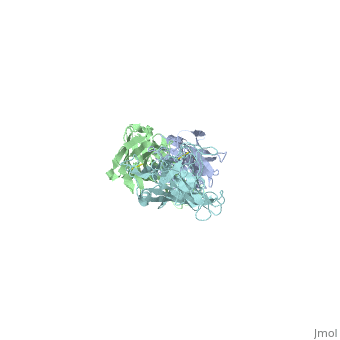G1SecL05: Difference between revisions
Jump to navigation
Jump to search
| Line 4: | Line 4: | ||
= Table of Contents= | = Table of Contents= | ||
*''' | *'''1. Background ''' | ||
*''' | *'''2. Development of the recombinant vaccine | ||
*''' | *'''3. Introduction to the LA-2 fab complex | ||
*''' | *'''4. Binding affinitity and interactions in the LA-2 fab complex''' | ||
*''' | *'''5. Structural Defects in the vaccine''' | ||
*''' | *'''6. Discussion''' | ||
'''Background''' | '''Background''' | ||
Revision as of 05:00, 29 April 2013
LA-2 FAB with OspA ComplexLA-2 FAB with OspA Complex
Table of ContentsTable of Contents
- 1. Background
- 2. Development of the recombinant vaccine
- 3. Introduction to the LA-2 fab complex
- 4. Binding affinitity and interactions in the LA-2 fab complex
- 5. Structural Defects in the vaccine
- 6. Discussion
Background
Lyme disease, discovered in 1975, is a vector- borne disease caused by the inoculation of spirochete borrelia into the skin by members of hard bodied ticks of the family Ixodidae. Symptoms include arthritis at major joints, neurological problems such as reduced memory and poor ability to concentrate, and characteristic lesions erythema migans, more commonly known as the bull’s eye rash. A major outer surface membrane protein of Borrelia, ospA, plays a key role in immunity against Lyme disease through its binding to the antibody LA-2 fab.
Development of the recombinant vaccine
|
